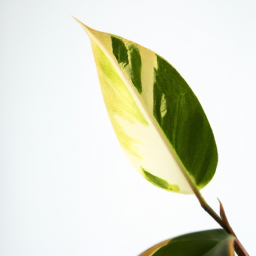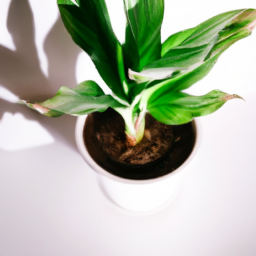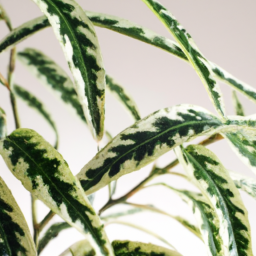
Are you looking to bring some greenery into your home but don’t have a lot of natural light? Don’t worry, there are plenty of indoor plants that thrive in low light conditions. Indoor plants like shade can add a touch of nature to any room, even if it doesn’t get much sunlight. Whether you have a dark corner that needs some brightening up or simply want to add some greenery to your space, there are plenty of options to choose from. In this blog post, we will explore some of the best indoor plants that love shade and how to care for them to keep them thriving in your home.
Benefits of Indoor Plants That Thrive in Shade
Introduction
When it comes to indoor plants, many people think that they need a lot of sunlight to thrive. While this may be true for some plants, there are actually many indoor plants that can thrive in low light conditions. In fact, there are several benefits to having indoor plants that prefer shade in your home. In this article, we will explore the benefits of these plants and provide some tips on how to care for them.
Improved Air Quality
One of the main benefits of having indoor plants that thrive in shade is that they can help improve the air quality in your home. Plants are natural air purifiers, absorbing carbon dioxide and releasing oxygen through the process of photosynthesis. In addition, some plants can also remove harmful toxins from the air, such as formaldehyde and benzene. By having these plants in your home, you can breathe easier and enjoy cleaner air.
In addition to improving air quality, indoor plants can also help regulate humidity levels in your home. Plants release water vapor through a process called transpiration, which can help increase humidity in dry indoor environments. This can be especially beneficial during the winter months when indoor heating can dry out the air. By having plants that thrive in shade, you can create a more comfortable and healthy living environment.
Another benefit of indoor plants that prefer shade is their ability to reduce stress and improve mental well-being. Studies have shown that being around plants can help lower blood pressure, reduce anxiety, and improve overall mood. In fact, the presence of plants in indoor spaces has been linked to increased productivity and creativity. By incorporating shade-loving plants into your home decor, you can create a calming and relaxing atmosphere that promotes mental and emotional well-being.
Low Maintenance
Another advantage of indoor plants that thrive in shade is that they are often low maintenance and easy to care for. Unlike plants that require direct sunlight, shade-loving plants can tolerate lower light levels and do not need to be placed near windows. This makes them ideal for rooms with limited natural light, such as bathrooms, bedrooms, or offices with small windows.
In addition, many shade-loving plants are more forgiving when it comes to watering and humidity levels. These plants typically do not require frequent watering and can tolerate dry indoor conditions. This makes them perfect for busy individuals or those who may not have a green thumb. By choosing indoor plants that prefer shade, you can enjoy the beauty of greenery in your home without the stress of high maintenance care.
Overall, there are many benefits to having indoor plants that thrive in shade. From improving air quality and reducing stress to being low maintenance and easy to care for, these plants can enhance the beauty and comfort of your home. Consider adding some shade-loving plants to your indoor space and experience the numerous advantages they have to offer.

Top 5 Low-Light Indoor Plants for Your Home
Indoor plants are a great way to add a touch of nature to your home, but not all plants thrive in low-light conditions. If you have a shady corner or a room with limited natural light, don’t worry – there are plenty of indoor plants that can still thrive in these conditions. Here are the top 5 low-light indoor plants that are perfect for your home:
1. Snake Plant (Sansevieria trifasciata)
The snake plant, also known as mother-in-law’s tongue, is a popular choice for low-light environments. It has tall, sturdy leaves that can survive with minimal sunlight and water. Snake plants are also known for their air-purifying qualities, making them a great addition to any room in your home.
When caring for a snake plant, make sure to water it sparingly and avoid overwatering, as this can cause root rot. Place your snake plant in indirect sunlight or artificial light to keep it healthy and thriving.
In addition to their low-light tolerance, snake plants are also easy to care for and can withstand neglect, making them perfect for beginners or busy plant owners.
2. Peace Lily (Spathiphyllum)
The peace lily is another excellent choice for low-light environments. This plant produces beautiful white flowers and glossy green leaves, adding a touch of elegance to any room. Peace lilies are also known for their air-purifying qualities, making them a popular choice for bedrooms and living rooms.
When caring for a peace lily, make sure to keep the soil consistently moist but not waterlogged. Peace lilies can also benefit from occasional misting to increase humidity levels. Place your peace lily in a shady spot away from direct sunlight to prevent leaf burn.
Peace lilies are relatively low-maintenance plants and can thrive in low-light conditions, making them a perfect choice for busy homeowners or those with limited natural light in their homes.
3. Spider Plant (Chlorophytum comosum)
The spider plant is a popular choice for low-light environments due to its tolerance for shade and its easy care requirements. This plant produces long, arching leaves with small white flowers, adding a touch of greenery to any room. Spider plants are also known for their air-purifying qualities, making them a great addition to any indoor space.
When caring for a spider plant, make sure to water it regularly but allow the soil to dry out between waterings. Spider plants prefer indirect sunlight but can also thrive in low-light conditions. Avoid placing your spider plant in direct sunlight, as this can cause leaf burn.
Spider plants are easy to propagate and can quickly grow into new plants, making them a great choice for beginner plant owners or those looking to expand their indoor plant collection.
4. Cast Iron Plant (Aspidistra elatior)
The cast iron plant is a hardy and resilient plant that can thrive in low-light conditions. This plant produces dark green, leathery leaves that can withstand neglect and low humidity levels. Cast iron plants are also known for their air-purifying qualities, making them a great choice for any room in your home.
When caring for a cast iron plant, make sure to water it sparingly and avoid overwatering, as this can cause root rot. Cast iron plants prefer indirect sunlight or artificial light and can tolerate low-light conditions. Avoid placing your cast iron plant in direct sunlight, as this can cause leaf burn.
Cast iron plants are relatively low-maintenance and can thrive in a variety of indoor environments, making them a great choice for busy homeowners or those with limited natural light in their homes.
5. ZZ Plant (Zamioculcas zamiifolia)
The ZZ plant is a popular choice for low-light environments due to its tolerance for shade and its easy care requirements. This plant produces glossy, dark green leaves that can survive with minimal sunlight and water. ZZ plants are also known for their air-purifying qualities, making them a great addition to any room in your home.
When caring for a ZZ plant, make sure to water it sparingly and allow the soil to dry out between waterings. ZZ plants prefer indirect sunlight or artificial light and can tolerate low-light conditions. Avoid placing your ZZ plant in direct sunlight, as this can cause leaf burn.
ZZ plants are relatively low-maintenance and can thrive in low-light conditions, making them a perfect choice for busy homeowners or those with limited natural light in their homes.

How to Care for Shade-Loving Indoor Plants
Choosing the Right Plants for Shade
When it comes to caring for indoor plants that thrive in shade, the first step is to choose the right plants for your space. Some popular options include peace lilies, snake plants, and ZZ plants, all of which are known for their ability to thrive in low-light conditions. Before purchasing any plants, be sure to research their specific light requirements to ensure they will be happy in your home.
Once you have chosen the perfect shade-loving plants for your space, it’s important to consider their other care requirements, such as watering and humidity levels. While these plants may not need as much light as others, they still require regular watering and a humid environment to thrive. Be sure to water your plants when the top inch of soil feels dry to the touch, and consider placing a humidifier near them to help maintain the proper moisture levels.
In addition to watering and humidity, it’s also important to periodically fertilize your shade-loving indoor plants to ensure they have the nutrients they need to grow and thrive. Look for a balanced, water-soluble fertilizer and follow the instructions on the packaging for best results. With the right care and attention, your shade-loving plants will be sure to thrive in your home.
Providing the Right Environment for Shade-Loving Plants
In addition to choosing the right plants and providing them with the proper care, it’s also important to create the right environment for your shade-loving indoor plants to thrive. This includes ensuring they have the right amount of space to grow, as well as the proper temperature and humidity levels.
When it comes to space, be sure to give your plants enough room to spread out and grow. Avoid overcrowding them or placing them too close to other plants, as this can inhibit their growth and lead to issues such as mold or pests. Additionally, be sure to place your plants in a location where they will receive indirect sunlight, such as near a window with sheer curtains or in a room with bright, but filtered light.
Temperature and humidity are also important factors to consider when caring for shade-loving indoor plants. Most shade-loving plants prefer temperatures between 65-75 degrees Fahrenheit, so be sure to keep your home within this range to ensure your plants are comfortable. Additionally, consider placing a humidity tray near your plants or misting them regularly to help maintain the proper moisture levels.
By providing your shade-loving indoor plants with the right environment, you can help them thrive and grow to their full potential. With a little care and attention, these plants will bring beauty and life to your home for years to come.
Troubleshooting Common Issues with Shade-Loving Plants
Despite your best efforts, you may encounter some common issues when caring for shade-loving indoor plants. These can include problems such as yellowing leaves, wilting, or pest infestations. If you notice any of these issues, it’s important to address them promptly to prevent further damage to your plants.
Yellowing leaves are a common issue with indoor plants and can be caused by a variety of factors, including overwatering, underwatering, or nutrient deficiencies. To address this issue, check the soil moisture levels and adjust your watering schedule as needed. Additionally, consider fertilizing your plants with a balanced fertilizer to provide them with the nutrients they need to thrive.
Wilting is another common issue that can occur with shade-loving plants, and is often a sign of underwatering or root rot. To address this issue, check the soil moisture levels and adjust your watering schedule accordingly. If you suspect root rot, gently remove the plant from its pot and inspect the roots for any signs of decay. Trim away any damaged roots and repot the plant in fresh soil to help it recover.
Pest infestations can also be a problem with indoor plants, particularly those grown in shade. Common pests include spider mites, aphids, and mealybugs, all of which can damage your plants if left unchecked. To address pest infestations, consider using natural remedies such as neem oil or insecticidal soap, or consult with a professional for more severe infestations.
By being proactive and addressing these common issues promptly, you can help your shade-loving indoor plants thrive and grow to their full potential. With the right care and attention, these plants will bring beauty and life to your home for years to come.
Here’s what we learned
If you’ve always thought that indoor plants need lots of sunlight to thrive, think again! There are actually many plants that prefer shade and can do just fine in low-light conditions. In fact, some indoor plants can even be harmed by too much direct sunlight, so it’s important to choose the right plants for your space.
Some great options for shade-loving indoor plants include peace lilies, snake plants, and pothos. These plants are not only beautiful additions to your home decor, but they are also relatively easy to care for and can thrive in areas with little natural light. So if you have a room in your home that doesn’t get much sunlight, don’t worry – there are still plenty of options for bringing some greenery indoors. Just be sure to do your research and choose plants that are well-suited to low-light conditions, and you’ll have a lush indoor garden in no time.
Your Burning Questions Answered:
Q1. What are some indoor plants that thrive in shade?
A1. Some indoor plants that do well in low light conditions include snake plants, pothos, peace lilies, and ZZ plants. These plants are great options for areas in your home that don’t receive a lot of natural light.
Q2. How often should I water indoor plants that prefer shade?
A2. It’s important to not overwater plants that prefer shade, as they may not dry out as quickly as plants in direct sunlight. Be sure to check the soil moisture before watering and only water when the top inch of soil is dry to the touch.
Q3. Can indoor plants that like shade still benefit from some sunlight?
A3. While indoor plants that prefer shade can survive in low light conditions, they may still benefit from some indirect sunlight. Placing them near a window with sheer curtains or in a room with bright, indirect light can help them thrive.
Q4. How can I prevent my indoor shade plants from becoming leggy?
A4. To prevent indoor shade plants from becoming leggy, make sure they are receiving enough light to maintain their shape. Rotate the plants occasionally to ensure even growth and consider pruning them to encourage bushier growth.
Q5. Are there any specific care tips for indoor plants that like shade?
A5. In addition to proper watering and occasional sunlight, indoor plants that prefer shade may benefit from regular dusting of their leaves to allow for better light absorption. It’s also important to monitor humidity levels, as some shade-loving plants thrive in higher humidity environments.
Dr. Olivia Green is a botanist with over two decades of experience in indoor plant cultivation. She holds a Ph.D. in Plant Biology and has dedicated her career to researching plant behavior in controlled environments. Dr. Green is passionate about helping plant enthusiasts master the art of indoor gardening through her extensive knowledge and practical insights.


